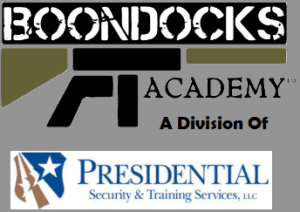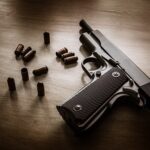Pistols in the Pew: Selecting a Firearm for Church Security
While not all church security team members need to be armed, the harsh reality is Church Security Teams (CSTs) need to prepare and stage a potential armed response inside the church’s buildings. It’s not for the faint of heart. Armed security personnel must accept and prepare for the reality that he or she may be the one called upon to use deadly force to stop a violent attacker. CST members must prepare physically, mentally, emotionally, and spiritually for what could become the worst day of their lives.
In a previous article, we talked about qualification requirements for armed church security team members. Specifically, we talked about the acceptable minimum for qualifying team members and we suggested the use of courses of fire (COFs) used by local law enforcement officers (LEOs) as a baseline of performance. How accurate do we need to be? In active shooter response by civilians, we have seen a headshot at 14+ yards and initial body hits on an active shooter from 42 yards. Are your team members capable of making those hits?
Proper training is critical in establishing and retaining a high level of skill, we also need to look at the firearms and equipment that we will depend upon to provide an armed response. As the old saying goes, “Race what you brought to the track.” You cannot replace training and proper practice for skill development and maintenance of skill, but there is an inherit limit to performance you can achieve with any gun. I make a joke about the Honda I drive. “While I’m a reasonably good driver, my car (and it’s a great car) and I will never be competitive in a NASCAR race regardless of my skill set. The limits of my equipment will catch-up with me at some point and limit my success.”
Ed Monk of Last Resort Firearms Training says, “Any gun will do as long as you will do.” We must be realistic. Would you want to go up against an AR or AK with a subcompact pistol or a snubby revolver with a 2-inch barrel? These guns are easier to carry and conceal, but better equipment options exist that will help increase your ability to apply your skills and achieve success.
Long before concealed carry was even a thought, an officer explained to me the difference between a “pursuit gun” and a “defensive gun.” I wish I could properly credit that officer for that advice, but I don’t recall his name. His guidance stuck with me and has shaped my thought process on the subject.
While “snubbies” and “pocket guns” may be sufficient for defending yourself against an attacker at a gas pump, a car-jacker at an isolated intersection, etc., an armed response in a church security setting may more closely resemble “offensive” shooting than “defensive” shooting. You may be required to engage an active shooter at greater distances than 1-3 yards.
I am frequently asked, “What gun do you recommend for me?” My response is, “The gun you feel comfortable with, and the gun that you can safely and effectively use.” In addition, a few other considerations merit reflection. For your duty at church, you need a firearm that enables you to consistently hit an 8-inch circle at 25 yards and a 4-inch circle at 10 yards. This skill level exceeds the typical LEO qualification COFs that we discussed in a previous article. To achieve this level of accuracy, most shooters will require a duty-size firearm. More specifically, consider a handgun with a 4-inch or longer barrel. The use of optics, slide-mounted lights, etc. is wise, provided you train with them and if they improve your performance.
Whatever firearm you choose, the gun must fit you, you must be able to carry it safely and comfortably, and you must be able to consistently hit your target without missing.

